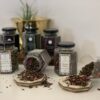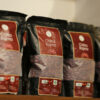Health benefits of jhangora and Some Dishes
Jhangora is one of the oldest food known to humanity and is one of the ancientest staples food of the people of Uttarakhand. It is light brown and oval and known as barnyard millet. It is one of the major crops grown in the lush Himalayan valleys of Kumaon and Garhwal regions of Uttarakhand. Because the barnyard millet tastes almost similar to broken rice when cooked, it is also called the “Sanwa rice.”
Why Jhangora is a better alternative than all other cereals?
Jhangora is not just a cheaper cereal but also rich in antioxidants. It also contains high fiber contents, proteins, micronutrients like magnesium, phenolic acids and is gluten-free. These reasons make jhangora the perfect cereal for you to add to your daily meal. We have researched a lot and found some highly beneficial facts about barnyard millet. Some of them we have attached here too.
1. It is much lower in calories than other cereals.
Barnyard millet is not just rich in antioxidants and proteins but also low in calories, which makes it suitable for losing weight too. You can easily replace your daily servings of rice with barnyard millet and still enjoy the taste of rice. The grains of barnyard millet is highly nutritious and will make you feel energetic and enthusiastic.
2. Good for diabetes patients
Have you ever pondered over the fact that why white rice is not recommended to eat by diabetes patients?
According to hsph White rice has a high glycemic index, meaning that it can cause spikes in blood sugar. Previous research has linked high glycemic index foods with increased type 2 diabetes risk. Jhangora is not only low on the glycemic index but also a gluten-free food which makes it suitable for diabetes patients too, as it can be a better alternative to rice.
3. Prevents cardiovascular diseases
Barnyard millet also prevents cardiovascular diseases and protects your heart.
4. An excellent source of fiber
Jhangora is known for its high fiber content too. The grain contains the highest amount of fiber compared to other grains and millets, This is also one of the main reasons people eat barnyard millet to prevent excess gas and bloating. Jhangora can also help in staving off periods of cramps. That’s why it can be eaten during the menstrual cycle.
5. Rich in iron
Jhangora is also the richest of all the cereals regarding iron content.
According to frontiersin the iron content in barnyard millet grain is about 15.6–18.6 mg/100 g (Saleh et al., 2013; Renganathan et al., 2017; Vanniarajan et al., 2018), which is rationally higher than major cereals and millets.
6. Good for bones and teeth
Barnyard millet is a good source of calcium, and that makes it a windfall for your teeth and bones. If you want healthier bones and stronger teeth, then you should definitely try switching your daily grain to jhangora. Jhangora is often known as a fast cereal because this cereal can be consumed during fasting too, but that is not the only method of consumption of jhangora. It can also make many mouth-watering dishes, and you can enjoy them during the non-fasting period.
Some of the dishes that can be made using barnyard millet are:-
- Jhangora ki kheer
- Jhangora payasam
- Jhangora Upma
- Sarawak ka chawal
- Janghora idli
Some of the recipes that we liked and would love if you would try them at your home are:-
1. Jhangora Idli
Ingredients required:-
- Jhangora
- Urad daal
- Water
- Soak some barnyard millet and urad daal in water for some hours.
- Blend both of them by mixing some water till you get a frothy, thick batter.
- Now take a steamer or idli cooker, boil some water in it. Till then, you can place your idli batter carefully in the stand.
- When the water starts boiling, put the stands in the steamer and turn off the stove after 10 to 15 minutes.
- Auniquefter taking it off from the stove, let it cool for 5 minutes.
- Your idli is ready, and now Remove them carefully from the stand and serve them with chutney or sauce.
You can enjoy this dish both hold or cold as per your preferences.
2. Jhangora Payasam
Ingredients Required:-
- Barnyard millet
- Milk
- Dry fruits
- Sugar
- Ghee
How to prepare?
Mix some barnyard millet with milk thoroughly.
Add sugar and stir gently to cook payasam.
Now take another pan and put some ghee in it.
Then add all the dry fruits and roast them until a dark golden color appears.
You can also add some vegetables to it if you want to.
This is one of the most accessible dishes to make and can be enjoyed as a breakfast or a lunch.
3. Jhangora kheer
When it comes to dessert, Who doesn’t love kheer?
Kheer is one of the most loved desserts among not only Indians but people from different parts of the world who love it.
If you love kheer, you have to try our recipe of jhangora kheer too.
Ingredients Required
- Jhangora
- Sugar
- Milk
- Dry fruits
How to prepare?
- Take a pan and boil some milk in it.
- After the milk is boiled, add some barnyard millet to it and keep stirring the mixture to avoid the lumps.
- Add some sugar to it and again keep stirring so that the sugar is dissolved properly in the mixture.
- Let it cook for some time, and once the mixture is cooked, you can add some dry fruits for the garnishing.
Your jhangora kheer is ready!
Either you can refrigerate your kheer for some time to enjoy cold or serve it as hot as you like.
Why Should you go for our jhangora?
Our jhangora is not just 100% organic and contained from the new valley of Uttarakhand but is also a major of living for many households. The local artisans and women make all our products of Uttarakhand.
By buying our products, you are not only doing a deed for nature but also supporting the livelihoods of local women of Uttarakhand.
We are bringing together the community of so-called ‘housewives’ to dive into a creative endure.
We want our Women to realize they are more than they give themselves credit for; they are loved and unique.
Join our little venture and help us attain our aim to encourage people to live a healthier and better life.






